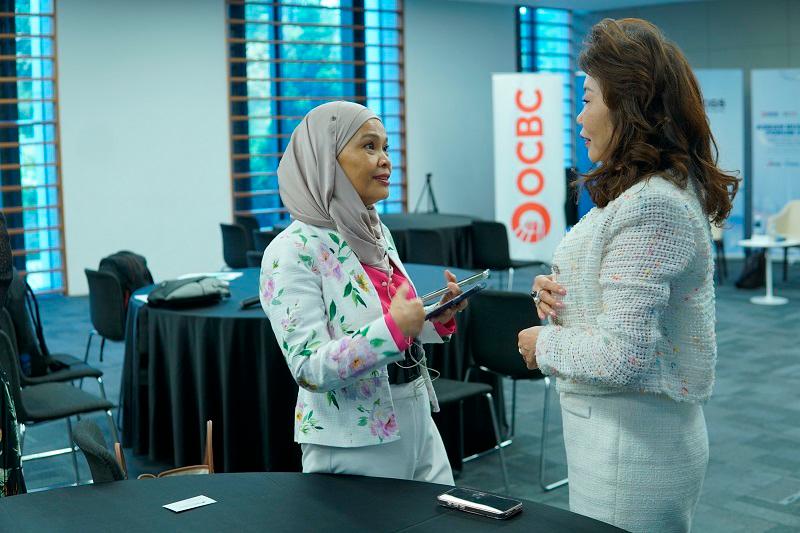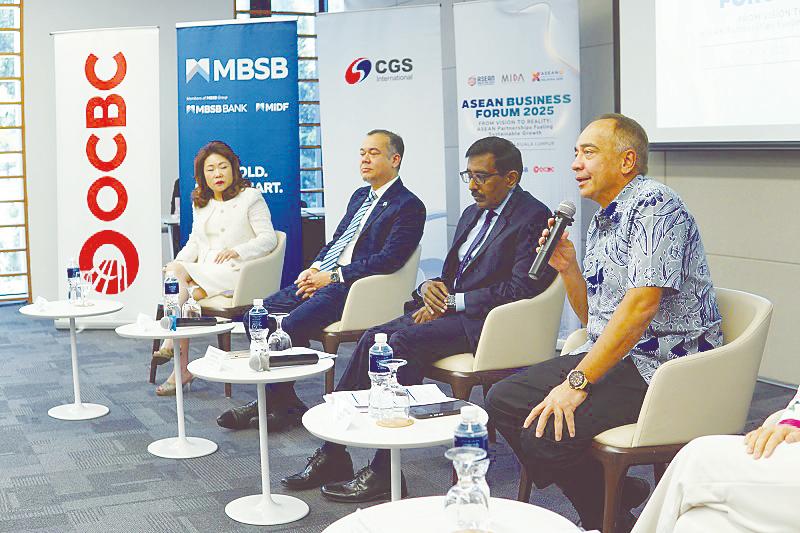KUALA LUMPUR: Asean stands at a critical juncture where accelerating economic integration is no longer optional – it is essential.
In the face of a challenging and uncertain global environment, the region must urgently take concrete steps to strengthen internal collaboration. This means increasing trade and investment flows among member countries and creating a more unified economic front.
Asean-BAC for Malaysia chairman Tan Sri Nazir Razak said despite significant progress in reducing tariffs – currently eliminated on 99% of goods within Asean – non-tariff barriers have been steadily rising.
He said tackling these will require empowering Asean institutions to enforce rules more effectively and ensure greater compliance across member states.
“The message is clear: Asean must act decisively to deepen integration or risk missing a pivotal opportunity to secure long-term economic resilience. There is a need for stronger enforcement mechanisms and greater authority for Asean bodies to regulate and reduce trade barriers effectively.
“Further, operational flexibility must be improved. We should allow companies to establish operations wherever it makes the most economic sense within the region, without unnecessary red tape or restrictions,” he told reporters at the curtain raiser to the Asean Business Forum 2025 (ABF 2025) today.
Malaysian Investment Development Authority (Mida) deputy CEO for investment promotion and facilitation Sivasuriyamoorthy Sundara Raja said Southeast Asia has been one of the fastest-growing economic regions over the past two decades, recording an average growth rate of 5.3%.
Within this, Asean has maintained a steady growth rate of around 4%, creating a favourable environment for investment across the region.
As a result, Sivasuriyamoorthy said, Asean now attracts about 17% of total global foreign direct investment (FDI) inflows – roughly one-fifth of the global total.
The strong performance is driven not only by the region’s economic potential but also by the strategic framework provided by the Asean Economic Community Blueprint. This blueprint has positioned Asean as a single production base, enhancing regional integration and economic certainty.
Such stability and coordination have made Asean – and Malaysia in particular – an attractive destination for investors seeking to establish or expand their operations, he said.
“Moving forward, we are very confident in our ability to attract even more investments into Malaysia. There are several new growth areas have been identified under the New Industrial Master Plan and the National Energy Transition Roadmap. These include front-end semiconductor manufacturing, green investments, hydrogen technology, carbon capture, and digital infrastructure.
“We are actively positioning Malaysia as a hub for global players in the digital space – whether in data centres, AI or digital construction technologies. In addition, we are exploring opportunities in sustainable aviation fuel, biofuels, and critical minerals.
“These are all emerging sectors, and in this context, I believe Malaysia is taking on a leadership role within Asean, helping to drive investments into this dynamic and fast-evolving region,” he said.
Focusing on SMEs, MBSB Bank Bhd group chief strategy officer Datuk Azlan Shahrim said across Asean and beyond, the focus of ABF 2025 extends to Malaysian SMEs operating domestically with ambitions to export within the region.
He said it also includes Asean-based SMEs looking to establish operations in Malaysia, as well as companies that are integral parts of the regional supply chain.
“One way we support SMEs is through our unique blended finance approach. MBSB Bak Bhd, with its 75-year legacy, has long provided regional financing in Malaysia and Singapore, often in partnership with SMEs. Today, with MIDF – the development finance arm now part of the MBSB Group – we are able to offer a more integrated solution.
“When an SME needs financing, we can provide a combination of government grants, government-backed financing schemes, and guarantees, up to 80%, and complement that with traditional commercial banking facilities.
“For example, if an SME requires RM50 million in funding, they might receive RM10 million in the form of equity financing, government support, and guarantees, with the remainder structured as commercial loans.
“This blended model results in a more attractive overall financing rate, enabling SMEs to be more competitive in the market,” he said.
ABF2025 will be held on Thursday alongside the 46th Asean Summit and the Asean-GCC+China Summit.
Themed “From Vision to Reality – Asean Partnerships Fuelling Sustainable Growth”, the forum will spotlight corporate engagement and business matchmaking among top 25 corporations and investors from Asean and China.
Organised by CGS International Securities Malaysia and co-hosted by Mida and Asean-BAC Malaysia, ABF 2025 is expected to attract over 500 participants, including more than 200 local and international companies.










